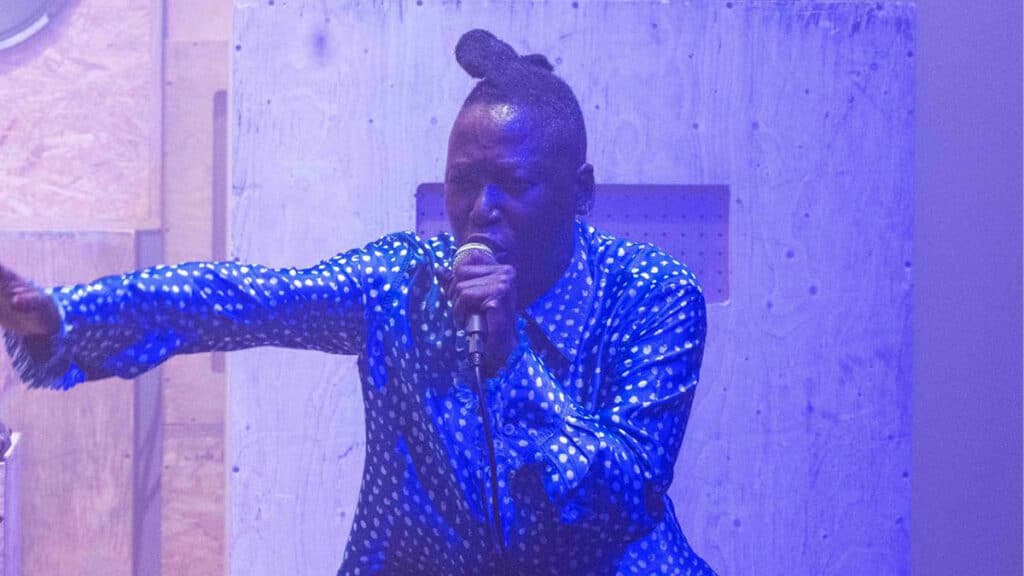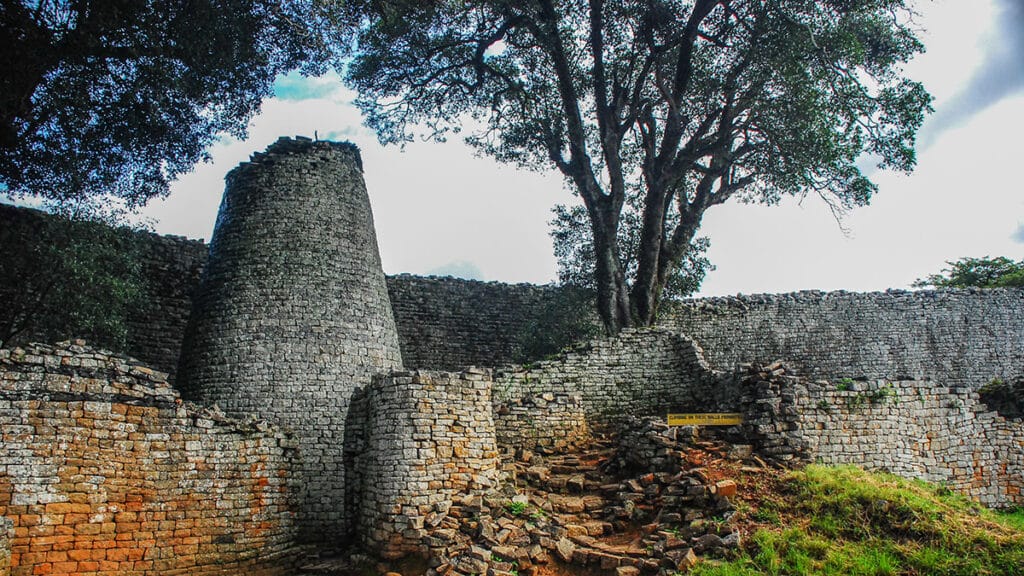nora chipaumire is a New York Zimbabwean choreographer, performance artist, and filmmaker who is a real force of nature. The multiple Bessie Award winner, Mellon Fellow, Guggenheim Fellow, and Doris Duke Fellow influences dance in New York City, Zimbabwe, and Europe.
nora chipaumire in New York City

Harlem Stage
nora chipaumire, the award-winning New York Zimbabwean dancer and choreographer, presents the New York Premiere of “ShebeenDUB,” a performance tryptich, with the “Nehanda” Radio Opera played through the “afternow” soundshitsystem installation designed by Ari Marcopoulos and Kara Walker and built by Matt Jackson Studios, the “ShebeenDUB” dance performance on the “afternow” set, followed by a dub dance after party; at Harlem Stage in Morningside Heights, West Harlem; on Friday-Saturday, May 17-18, 2024. 2pm Radio Opera Installation, 6pm doors, 7:30pm performance, 9pm-midnight dance party. From $10. harlemstage.org 🇿🇼 🇺🇸
Shona are a Bantu people of Zimbabwe, Mozambique, and South Africa.
Nehanda is a Zimbabwean Shona ancestral spirit who serves the One supreme God (same One as yours, there’s only one One) through women. Nehanda is revered as the female aspect of the divine in the same way that Christian traditions revere the Virgin Mary, and Yoruba traditions revere Yemayá. Nehanda is believed to be the spirit of Nyamhita, the spiritually-minded daughter of a 15th-century Shona king. One of the women she inspired was Nehanda Charwe Nyakasikana, a leader of the Chimurenga war of liberation against British settlers in 1896.
All this is important because women are the guardians of culture. European culture is patriarchal, but the patriarchy has destroyed Mother Earth. We need women’s energy to give birth to a better future. Many African and Indigenous traditions are matriarchal. This year we noticed that women artists around the world are creating more interesting art than men. Now is the time.
The artist is their art. At some level, nora is nehanda nora chipaumire, a leader in the fight for the liberation of women and people of color. In African Diaspora and Indigenous tradition, to be possessed by an ancestral spirit is considered a great honor and blessing. There is nothing bad or scary about it. The blessing comes with responsibility and happens in front of the community, so the community gets engaged in fulfilling the blessing too.
“ShebeenDUB” is basically a community ceremony. Shona traditions are new to us, but in Caribbean Yoruba traditions, the first thing we do when the community gathers is invite the divine to join us. The “Nehanda” Radio Opera is that call and response with the divine. nora describes the “afternow” soundshitsystem installation as a pyramid. She may be referencing the famous pyramids of Egypt, one of the famed seven wonders of the ancient world. But more personally she may be referencing the medieval city of Great Zimbabwe (11th-15th centuries) which is less well known out in the world. After calling the Nehanda to join us in the “Nehanda” Radio Opera, nehanda chipaumire dances. She is showing us her spirit. Her dance may be beautiful or ugly because life contains all of that. Then we dance together because the practice is all about community.

As we understand it, in the Shona language, a “zimbabwe” is a sacred house of stone, a center of power. So the “afternow” soundshitsystem installation is a metaphor for a sacred house. That’s very appropriate for Harlem Stage because it is also a sacred house, built in a waterworks. Water is sacred in many human traditions, including West African and Central African ones. Water has special meaning in the African Diaspora because we were brought to the Americas across the water. So now Harlem Stage is itself a zimbabwe.
Sound System developed in 1950’s Kingston, Jamaica. In the Black and Latin world, music is used as business advertising. That’s why every store in the neighborhood is pumping loud music onto the street. Local businesses or politicians still host street parties with sound systems made from blocks of giant speakers. The tradition has spread across the Latin world. Dub is electronic music that developed from Jamaican reggae instrumentals in the 1960s and 70s.
There is a direct line from sound system to hip hop. The first hip hop party was a back-to-school fund-raiser produced by New York Jamaicans Cindy Campbell and her brother DJ Kool Herc at 1520 Sedgewick in Morris Heights, The Bronx. Kool Herc was famous for his “Herculords” group and giant speakers which were basically a sound system. In Latin culture, there is a line from Jamaican sound system to reggaeton. Jamaican sound system culture turned into Panama bus advertising. In New York, Panamanians turned it into rap en español. In Puerto Rico, it became reggaeton. Sound system and dub are roots of a lot of great music.
Ari Marcopoulos is a Netherlands-born american artist, filmmaker, and adventurer whose practice embraces subcultures. @ari_marcopoulos_official
Kara Walker is a renowned African American artist known for her room-size cut-paper silhouettes. She is represented in New York City by Sikkema Jenkins gallery. @kara_walker_official | sikkemajenkinsco.com
Matt Jackson Studios is a world-famous Dutch puppetry and set design shop. @mattjacksonmattjackson
New York Venues
- Flea Theater
- French Institute Alliance Française (FIAF)
- Harlem Stage
- Joyce Theater
- The Kitchen
nora chipaumire
Zimbabwe is in the region where the human race comes from (all of us). The ancient capital, Great Zimbabwe, was one of the great ancient cities. However, both Mother Afrika and the Americas experienced serious colonial violence. The entire world is still decolonizing and many of today’s problems have roots in that mess. Nora acknowledges the way we all inherit the biases that are embedded in our cultures. Since many of today’s countries formed in the Colonial Era, colonial nonsense is embedded in many national cultures.
chipaumire’s artistic practice both embraces and challenges African and female stereotypes. Her work is built around the idea that you can’t imagine what the Black female African body holds. It’s true that we hold life experiences in our bodies, and the joy or fear of those experiences can pass down through the generations. She is so smart. With everything she does, chipaumire will challenge you. That is the sign of a great artist.
The African Diaspora lives in a parallel universe, but unless you’ve learned to read it, you can be looking right at it and not see it. When you see nora perform, you should be in your most present, open, and poetic frame of mind. She may dance like she is possessed, but her simplest movements are filled with deep meaning. She is a poet in motion.
chipaumire has an unusual relationship with time. She thinks 500 years in the past, and 500 years into the future, all at once. It’s a more oriental way of thinking. Few Americans think like that.
nora often doesn’t want you to just watch her, she wants you to engage with her performances. In that we recognize “Ubuntu,” the South African concept that “I am because we are.” That is something we need a lot more of now.
More Information
companychipaumire.com
Facebook @norachipaumire
Instagram @norachipaumire
Original nora chipaumire coverage was sponsored by Harlem Stage. Thank you. You give us the most interesting artists. We have wanted to work for nora for years.
